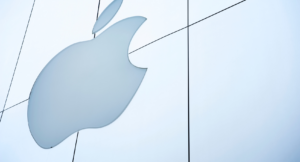Introduction
Toyota Motor Corporation is the leading car manufacturing company in the world has its origin and present headquarter at Toyota, Aichi, Japan. Toyota Motor Corporation was founded in 1937 by Kiichiro Toyoda as a follow-up from his father’s company, Toyota Industries, with the intention of manufacturing automobiles. Toyota AA was the first car launched by the company in 1939. It was a two-seater car. With time, the company came across many successes and downfalls while flourishing its business operations throughout the globe. In 1982, Toyota Motor Sales and Toyota Motor Co. merge forming a single company under the name Toyota Motor Corporation. (Schmitt, 2017)
The real catastrophe company faced in its lifetime was in 2011 when the company’s production extensive decline after the tsunami tragedy in northeastern Japan. Another blow for the company during the same period was the massive recalls of the vehicles especially in the U.S. because of the fault in accelerator pedals. After the recalls, President Akio Toyoda had even temporarily stopped the expansion plan and drags the company to focus on worker training, quality control, and improve efficiency at existing plants. The Company was able to retain its position by 2015.
Today, Toyota Motor Corporation is operating under 5 different brands around the world. These brands include Toyota brand, Ranz, Daihatsu, Hino, and Lexus selling its vehicles in over 170 countries through its 53 plants founded across 28 nations worldwide. In 2016, Toyota sold 10.3 million vehicles throughout the globe becoming the leading automaker of the world. Presently, it employs 33765 people worldwide who are well trained to offer the ultimate high-quality product through their safety, styling, comfort, performance, and user friendly. (GREENSPAN, 2017)
Toyota’s Mission Statement states (Toyota Global, 2018):
“Toyota seeks to create a more prosperous society through automotive manufacturing”.
Toyota’s Vision is:
“To lead the future of mobility and be the most admired brand.”
The Objective of Toyota is:
“To become a leader in the automotive industry with satisfying the requirements of its customer.”
The major Corporate Goals of Toyota are:
- To raise the corporate value as a management major concern
- To Introduce new products as per customer needs
- To become more competitive in the automobile industry
To achieve these goals, mission, and vision, the company defines its core strategies as follows:
- To meet all challenges to realize the vision,
- Kaizen- working towards continuous improvement,
- Genchi Genbutsu- finding the right facts to make the right decision,
- Innovation and sustainability.
SWOT Analysis:
The SWOT Analysis is used to identify the most significant opportunities, threats, and organizational weaknesses that a company should deal with through its strengths. Being the global leader in the automotive industry, Toyota efficiently concentrates on these internal and forces that are likely to have a major impact on the company’s business.
Toyota’s Strengths
Strengths are the internal strategic capabilities and core competencies of the company. Toyota’s strengths are quite strong as they have given the company, the power to achieve the market leader position in the world. These strengths are:
- Toyota offers high-quality products making billions of satisfied and loyal customers around the world. The products offered by the company meet all the customer needs.
- Toyota has the strongest brand image in the automotive industry globally.
- Its global supply chain allows flexibility that helps in minimizing market-based risks.
- Toyota provides a culture that supports quick innovation and capabilities in employees that helps the company to maintain its long-term competitive advantage.
- The company strongly follows its core strategy of continuous improvement in its supply chain, production, and process and product quality.
- One of the company’s competitive edge is its motivated employees who are engaged in the process of improvement and are empowered enough that employee at any line of authority has the capability to solve problems occurring the production process.
- Toyota’s initiative in environmentally friendly products serves to be a strength as it has been able to offer alternatives to the gasoline-powered market by producing vehicles of other types like fuel cells, pure electrics, and hybrids. Because of this Toyota won 1st position among Global Green Brands by the Interbrand Survey.
Toyota’s Weaknesses
Weaknesses are the internal strategic factors that could consider as hindrances to business growth. Toyota’s main weaknesses are as follows:
- The global hierarchical organizational structure of Toyota does not allow greater flexibility to regional operations.
- The company’s culture of confidentiality serves to be a weakness as it reduces response times in dealing with rising issues.
- Product recalls have adversely affected the company’s image in the last few years. Its first recall in 2009 and second recall in 2014 have weakened the company’s production cycle as the recalling and repairing process consumes production time, production capacity that could be utilized in producing new products.
- The Tsunami disaster proves that Toyota’s supply chain is vulnerable to any unforeseen disasters and could affect the company’s operations. No news has been heard that whether the company has taken precautionary measures for future uncertainty or not.
Opportunities
Opportunities are the external strategic forces that a company could identify to progress its business. Toyota’s most noteworthy opportunities are:
- Markets of the developing countries are growing at a rapid pace opening opportunities for automakers like Toyota to increase their revenues by penetrating the untapped markets.
- An increase in demand for fuel-efficient automobiles has been experienced over the past 5 years encouraging the automakers for further innovations.
- Nowadays consumers are taking more interest in advanced electronics in vehicles
- The weakening of the Japanese Yen against the U.S. Dollar indicates increased competitiveness of products and their components being imported by the U.S. from Japan.
Threats:
Threats are the external driving forces that could harm a company’s performance. Toyota’s major threats are:
- The emerging demand for vehicles in the society where today every family member needs his/her own vehicle is giving birth and growth to low-cost *-competitors specifically Chinese, Korean, and Indian manufacturers.
- The competitors of Toyota are strong enough and are always in their growth cycle, for instance, Honda, Ford, and GM. Volkswagen is giving tough competition to Toyota as shown in the table below:(Focus2move, 2018)
Conclusion:
The SWOT analysis of Toyota recognizes the major strengths of the company, highlights its weaknesses that need to be addressed beforehand, provides information regarding opportunities that could be explored while keeping under consideration the potential threats. Although the projections for this Japanese company are quite positive, yet, to overcome the impact of its threats emerging from competitors, Toyota needs to exploit its competitive advantage based on its innovative capabilities. The organizational culture and structure could further be improved to maximize its flexibility in problem solving and decision-making. Moreover, Toyota can further expand its operations in the hybrid car market and foster its innovations for the future. Lastly, Toyota should endeavor to lessen the likelihood of major risks for instance recalls and the susceptibility of its supply chain in unforeseen situations (FERGUSON, 2017).
Bibliography
FERGUSON, E. (2017, February 2). Toyota’s SWOT Analysis & Recommendations. Panmure Institute.
Focus2move. (2018, April 10). World car bank ranking: The top 50 in 2018. Focus2Move. Retrieved from https://focus2move.com/world-cars-brand-ranking/
GREENSPAN, R. (2017, February). Toyota’s Vision Statement and Mission Statement Analysis. Panmure institute. Retrieved from http://panmore.com/toyota-mission-statement-vision-statement-analysis
Schmitt, B. (2017, January 2). Toyota Set To Remain World’s Largest Automaker. Forbes.com. Retrieved from https://www.forbes.com/sites/bertelschmitt/2017/01/10/toyota-set-to-remain-words-largest-automaker/#35a3ead4261f
Toyota Global. (2018). Vision & Philosophy. Retrieved from Toyota Global: http://www.toyota-global.com/company/vision_philosophy/



